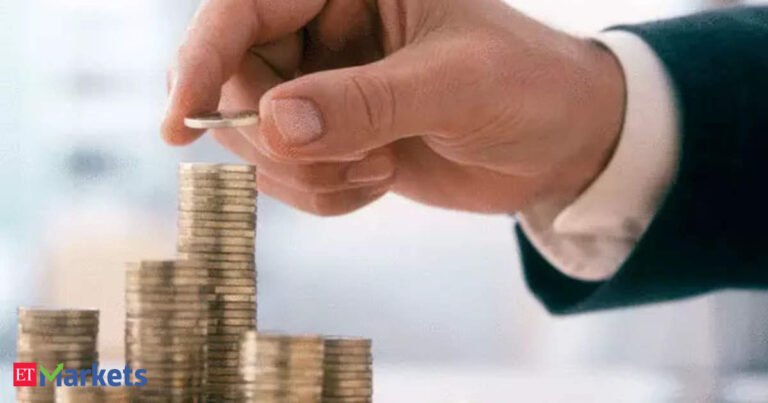Reality is far from it. You can make better returns by staying invested for the long run. Let me show you this with the help of an example.
A financial asset like shares or mutual funds, if held for more than a year, is termed as long term and gains arising from the sale of such asset is charged an LTCG and anything held less than a year is levied STCG. LTCG over and above the gains of Rs 1.25 lakh was raised to 12.5% from 10% in the recent Union Budget. STCG was raised to 20% from 15%.
Now let’s do the math:
Let’s assume one is consistently generating an annual return of 14% on his capital by trading actively each year for a period of 20 years. He reinvests the net gains he makes to his initial capital by paying STCG of 20% each year. This is what his net take home income looks like after paying taxes STCG after 20 years.
 ETMarkets.com
ETMarkets.comNow let us see the other boring method of “buy and hold” way of investing. Here he is holding this asset for the entire period of 20 years right from start to end. This is what his net gains will look like after paying LTCG.
This asset can be anything a portfolio of carefully selected stocks, index or a mutual fund. Whatever he chooses it compounds at a reasonable rate of 14% on a yearly basis for 20 years. Now let’s see how the stats look:
 ETMarkets.com
ETMarkets.comEven after paying an LTCG of Rs 15.77 lakh the net take home after 20 years is a whopping 45% higher than what you would have made by short-term trading. Mind you the STCG you pay is only Rs 2.46 lakh higher than LTCG. Then why this difference?
It is because of compounding. By paying taxes at regular intervals, you are losing out on the power of compounding that you can get each year.
If you include transaction costs then the profits in trading would decrease further. If one has to meet the returns generated by the boring method, the CAGR of short-term trading should be 16.62%. This would still not include the transaction costs, time and effort that you will have to devote for trading.
Based on the above computations it is clear that being active in the market is not as rewarding as being just passively invested in the market. Even if the taxes are hiked an investor can always be in an advantageous position, then a trader in the long run.
Now the question that would arise in your mind is how can you select a portfolio of stocks for 20 years. Nobody knows with certainty what will happen two quarters down the line then how one can predict who will be the winners 20 years forward.
That’s where a mutual fund or an index fund can help you. An active mutual fund will pick stocks which show potential and will replace the ones which falter. An index fund will also do the same but its frequency is less.
With this approach you get the power of compounding combined with the power of adaptability to make superior returns.
Technical Outlook:
 ETMarkets.com
ETMarkets.comNifty reached the 25,000 milestone, reaching a high of 25,078. The Nifty closed the day at 24,718, down 0.47% for the week.
This dip mirrors slight weaknesses observed in global markets, contributing to the domestic market’s pullback at the week’s end.
The Nifty slipped below the 23.6% Fibonacci retracement level which is placed around 24,840, while the 20-day moving average remains near 24,600. However, the primary trend remains strong as long as the Nifty stays above the support level 24,450.
In the near term, the Nifty may consolidate within the 24,500-25,000 range before making any significant directional move. The India VIX, currently at 14.32, poses a potential risk of increased volatility if it surpasses the 15 mark, which could disrupt the prevailing bullish sentiment. Sector rotation may also drive market movements in the short term.


